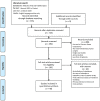Subsidence of Spinal Fusion Cages: A Systematic Review
- PMID: 36289005
- PMCID: PMC9807049
- DOI: 10.14444/8363
Subsidence of Spinal Fusion Cages: A Systematic Review
Abstract
Background: Although many research studies investigating subsidence of intervertebral fusion cages have been published, to our knowledge, no study has comprehensively compared cage subsidence among all lumbar intervertebral fusion (LIF) techniques. This study aimed to review the literature reporting evidence of cage subsidence linked to LIF. The amount of subsidence was compared and associated with the procedures and corresponding implants used, and the effect of cage subsidence on clinical outcomes was investigated.
Methods: For this systematic review, the MEDLINE and PubMed databases were used to identify relevant studies. Search terms included lumbar, lumbar vertebrae, lumbar spine, cage, spinal fusion, prosthesis, prosthesis implantation, implantation, implants, interbody, spacer, and subsidence. Studies included in this review were those having more than 10 patients and reporting the amount of subsidence observed using computed tomography or x-ray imaging after surgery and at follow-up visits after a minimum of 6 weeks postsurgery. Data and scale definitions related to subsidence were extracted from articles for comparison of subsidence prevalence between the 5 LIF surgical procedures.
Results: Forty articles were identified for inclusion. The review included data from 390 anterior lumbar intervertebral fusions (ALIFs), 2130 lateral lumbar intervertebral fusions (LLIFs), 560 posterior lumbar intervertebral fusions (PLIFs), 245 oblique lumbar intervertebral fusions (OLIFs), and 1634 transverse lumbar intervertebral fusions (TLIFs) for a total of 4959 patients who underwent LIF surgery. The minimum and maximum percentages of the number of patients having subsidence for each procedure in the included studies were as follows: ALIF stand-alone, 6% and 23.1%; LLIF stand-alone, 8.7% and 39.6%; LLIF with posterior fixation, 3.3% and 20.7%; OLIF with posterior fixation, 4.4% and 36.9%; PLIF with posterior fixation, 7.4% and 31.8%; and TLIF, 0.0% and 51.2%.
Conclusions: The number of patients experiencing subsidence varied between studies within each fusion procedure. Our findings indicate that all 5 surgical methods are at risk of subsidence. Overall, ALIF without posterior fixation resulted in the lowest reported subsidence occurrence among the 5 surgical approaches. There is conflicting evidence on the association between subsidence and negative clinical outcomes.
Clinical relevance: This review defines and compares subsidence incidence between all LIF procedures and investigates the risk of symptomatic clinical outcomes.
Keywords: anterior lumbar interbody fusion (ALIF); lateral lumbar interbody fusion (LLIF); oblique lumbar interbody fusion (OLIF); posterior lumbar interbody fusion (PLIF); transverse lumbar interbody fusion (TLIF).
This manuscript is generously published free of charge by ISASS, the International Society for the Advancement of Spine Surgery. Copyright © 2022 ISASS. To see more or order reprints or permissions, see http://ijssurgery.com.
Conflict of interest statement
Declaration of Conflicting Interests: The authors report no conflicts of interest in this work.
Figures


References
-
- Zhao Y, Jia J, Liu W, et al. . Influence of contoured versus straight rod on clinical outcomes and sagittal parameters in minimally invasive transforaminal lumbar interbody fusion (MIS-TLIF) at L4/5 level-more than 5 years follow-up. J Orthop Sci. 2020;25(1):89–95. 10.1016/j.jos.2019.03.008 - DOI - PubMed
LinkOut - more resources
Full Text Sources
